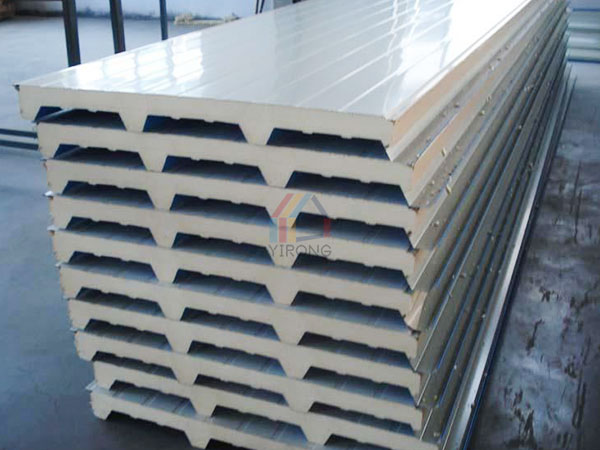Zhengzhou, Henan Province, China
Now Contact: Do you need PU/EPS/Rock Wool sandwich panels?
Zhengzhou, Henan Province, China
Now Contact: Do you need PU/EPS/Rock Wool sandwich panels?
Polyurethane sandwich panels are a commonly used roofing material with good insulation properties and durability. It can be used in different types of buildings including residential, commercial and industrial buildings. Installing polyurethane roof panels requires certain skills and steps, and the installation method will be described in detail below.
First, there is some prep work that needs to be done before polyurethane roof panels can be installed. First, make sure the roof is flat and has no obvious bumps. Clean the roof surface of oil, dirt, and other debris to ensure that the polyurethane sandwich panels adheres securely to the roof.
The second step is to measure the dimensions of the roof. Use the measuring tool to accurately measure the length, width and pitch of your roof. These dimensions will help determine the size and number of polyurethane roof panels.
Next, prepare the installation material for the polyurethane roof shingles. These materials include polyurethane panels, adhesives, waterproofing and installation tools. Make sure to use high-quality polyurethane roof panels and adhesives to ensure the durability and waterproofing of the roof.

Before starting to install polyurethane roof panels, a layer of waterproofing material needs to be applied to the roof surface. This helps prevent moisture from penetrating beneath the roof and improves the roof's waterproof performance. Use a brush or sprayer to spread the waterproofing evenly over the roof surface, making sure to cover every corner and edge.
When the waterproofing material is dry, the polyurethane roof panel can be installed. First, spread the adhesive evenly on the roof surface. Using a brush or roller, make sure the adhesive covers the entire roof surface and is of an even thickness.
Next, place the polyurethane sandwich panels on top of the adhesive. Starting on one side of the roof, gently place the polyurethane roof panels over the adhesive, ensuring a tight fit to the roof surface. Use a rubber hammer or mallet to tap the urethane roof panels lightly to ensure it is fully bonded with the adhesive.
When installing polyurethane roof panels, there are a few details to pay attention to. First, make sure there is enough overlap between each urethane roof shingle. This helps prevent moisture from penetrating beneath the roof. Second, make sure that the edges of each urethane roof panels are snug against the roof surface to prevent water leaks. Finally, regularly check for gaps or problems during installation and fix them promptly.
After the polyurethane roof shingles are installed, a final inspection is required. Check that the roof surface is level and that the polyurethane shingle is firmly adhered to the roof. Make sure there are no obvious defects or problems to ensure the quality and performance of the roof.
To sum it up, installing polyurethane roof panels requires a certain amount of preparation and skill. Before proceeding with the installation, the roof surface needs to be cleaned, the dimensions measured and the installation materials prepared. During installation, waterproofing is applied, adhesive is applied, and polyurethane sandwich panels are attached to the roof. During installation, attention to detail and timely fixes are required. With the correct installation of polyurethane roof panel, the waterproof performance and durability of the roof can be improved, protecting the building from the external environment.